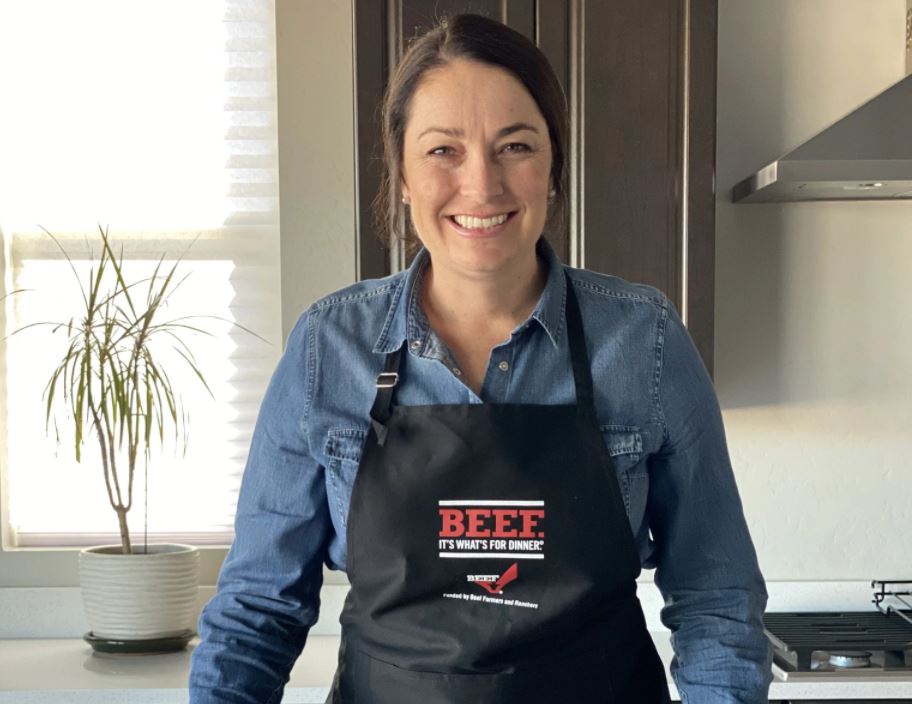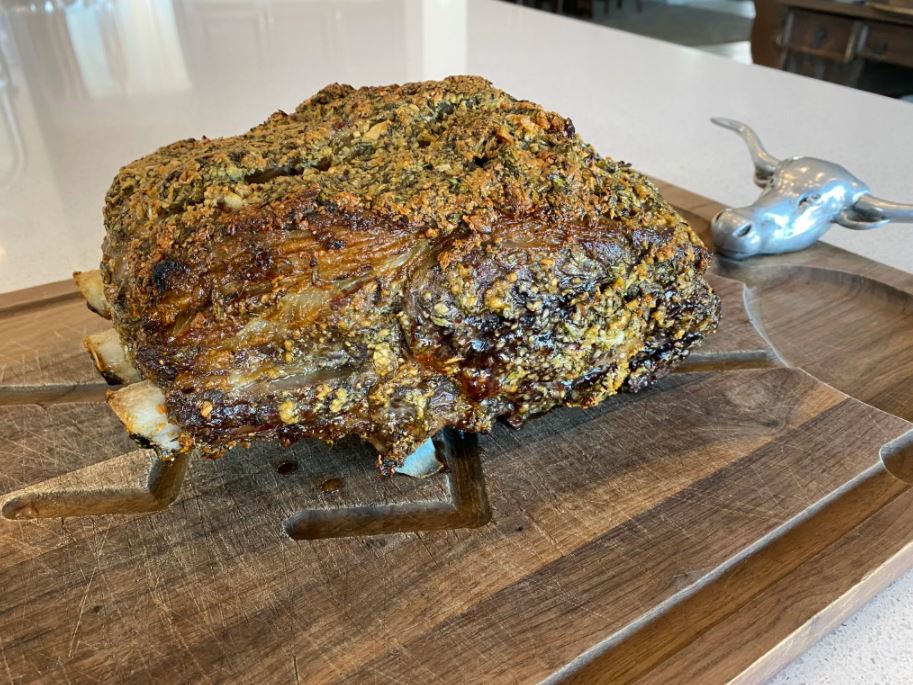By Sarah Hunt, AZFB Communications Intern
(Recipe and Quoted Article By Lauren Maehling)


Are you looking to try a different meat for your holiday feast this year? Try prime rib! It is delicious, juicy, and full of flavor, especially if you make it with Lauren Maehling’s Garlic and Herb-Crusted Prime Rib recipe.
We talked with Maehling over our Instagram Live today on @azfarmbureau’s account about how to make this recipe, as well as her best tips for ensuring your roast is a success for your Christmas dinner.
Check out this excerpt from her article below. Read the full article here.
“ Ingredients
Prime Rib Roast (officially called a Ribeye Roast and sometimes called a Standing Rib Roast) – I prefer bone-in but boneless is wonderful also. More about this cut here.
Fresh Rosemary: about 8 sprigs or 2 packs if you’re buying it from the market in those little herb packs. Will be about ½ cup chopped. You can use less if you have a small roast.
Fresh Thyme: 6-8 sprigs which is one of those herb packs from the market.
2 heads of Garlic: reserve 5-8 cloves. Finely dice the rest.
Extra Virgin Olive Oil
Your favorite Steak Seasoning (I like one with salt, pepper, garlic powder and parsley)
Prep Work for Herb Crust
Thinly slice lengthwise the 5-8 cloves you set aside (these will be to insert into the roast). Keep these separate from the chopped garlic.
Finely chop rosemary, thyme and garlic.
Mix together herbs with olive oil to a consistency you could rub all over the roast. It should be the consistency of a thin paste.
Cooking
Preheat oven to 500˚F with oven rack in the lower third of the oven (so your roast and roasting pan are sitting in the middle of the oven).
Not necessary but a bonus to the Prime Rib cooking experience, tune in to the Drool Log for 2 hours of uninterrupted satisfying sizzle. It will look fabulous on your TV.
Make sure roast is dry. Pat with paper towels, if needed.
Poke holes approximately 1” into the roast with a paring knife to insert the sliced garlic (tutorial video here). I like to add the garlic all over the top fat cap of the roast. The garlic will add extra flavor, unless you don’t want extra garlic flavor, then you can skip this step.
Coat roast with your favorite steak seasoning. How lightly or heavily you season is up to your preference and taste.
Now coat the entire roast in the garlic and herb paste. Doesn’t it smell divine?
Place the roast bone side down on the rack of your roasting pan. If cooking a boneless roast, make sure the fat side is up. If you don’t have a roasting rack, you can make one like this DIY roasting rack.
Insert an oven-proof thermometer, if you have one, into the center or thickest part of the roast, taking care to avoid the bone (if cooking a bone-in roast). I like a digital instant-read thermometer that can be read outside the oven.
Now is the time to put this grand roast in the oven! Cook at 500˚ for 20 minutes (preheated, of course, in case you ignored that first step).
Keep a watchful eye on the outer crust. If it looks like it is getting too dark (aka burning), loosely cover the roast with a sheet of aluminum foil.
After 20 minutes, lower oven temp to 350˚F.
Total cooking time will vary depending on the size of the roast. Plan on 15 minutes per pound of beef. So, if your roast weighs 8 pounds, your total cooking time will be approximately 2 hours. This is approximate as every oven is different, and that’s why it is very important to watch the internal temperature reading. Internal temperature is more important than the time on the clock.
Remove roast from the oven when meat thermometer registers 115-120°F for medium rare. As the roast rests (next step), the temperature will continue to rise. Some people like more done and some like more rare. It’s up to your personal preference.
Transfer Prime Rib to a cutting board and loosely tent with aluminum foil. Let rest 15-20 minutes. Resting is important – see note below.
Time to carve! First turn the roast on its side and remove the ribs. To do this, follow the curve of the ribs as close and you can making sure to hold the roast steady with a serving fork or tongs. Once the ribs are removed, turn the roast with the fat side up and carefully slice pieces to your desired thickness. I like 1” thick slices, but if you like thinner or thicker, you do you.
Enjoy! You’ll have salty and crusty end pieces for the end-piece lovers, and a nice medium rare in the middle for everyone else.”

